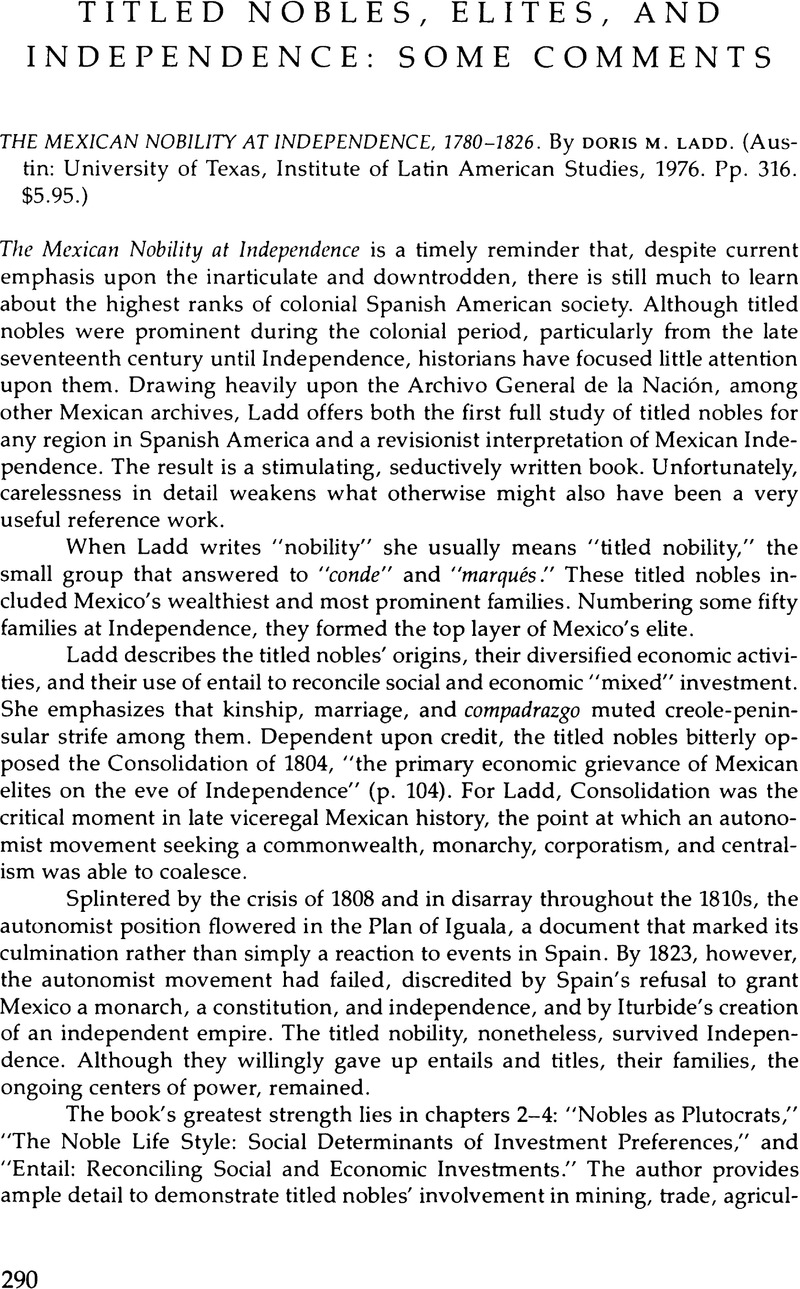Article contents
Titled Nobles, Elites, and Independence: Some Comments
Review products
Published online by Cambridge University Press: 24 October 2022
Abstract

- Type
- Books in Review
- Information
- Copyright
- Copyright © 1978 by the University of Texas Press
References
Notes
1. D. A. Brading, “Government and Elite in Late Colonial Mexico,” Hispanic American Historical Review 53:3 (August 1973):390.
2. Timothy E. Anna, “The Peruvian Declaration of Independence: Freedom by Coercion,” Journal of Latin American Studies 7:2 (November 1975):237.
3. Conde Bertrando del Balzo, “Familias nobles y destacadas del Perú en los informes secretos de un virrey napolitano (1715–1725),” Revista del instituto peruano de investigaciones genealógicas (Lima) 14 (1965):108–20. Paul Bentley Ganster has summarized the contents in “A Social History of the Secular Clergy of Lima during the Middle Decades of the Eighteenth Century” (Ph.D. dissertation, University of California, Los Angeles, 1974), p. 20.
4. Tadeo Haënke, Descripción del Peru (Lima, 1901), pp. 15–16.
5. Mark A. Burkholder and D. S. Chandler, From Impotence to Authority: The Spanish Crown and the American Audiencias, 1687–1808 (Columbia, Mo. and London, 1977), p. 145.
6. D. A. Brading, Miners and Merchants in Bourbon Mexico 1763–1810 (Cambridge, Eng., 1971), part 2.
- 2
- Cited by


